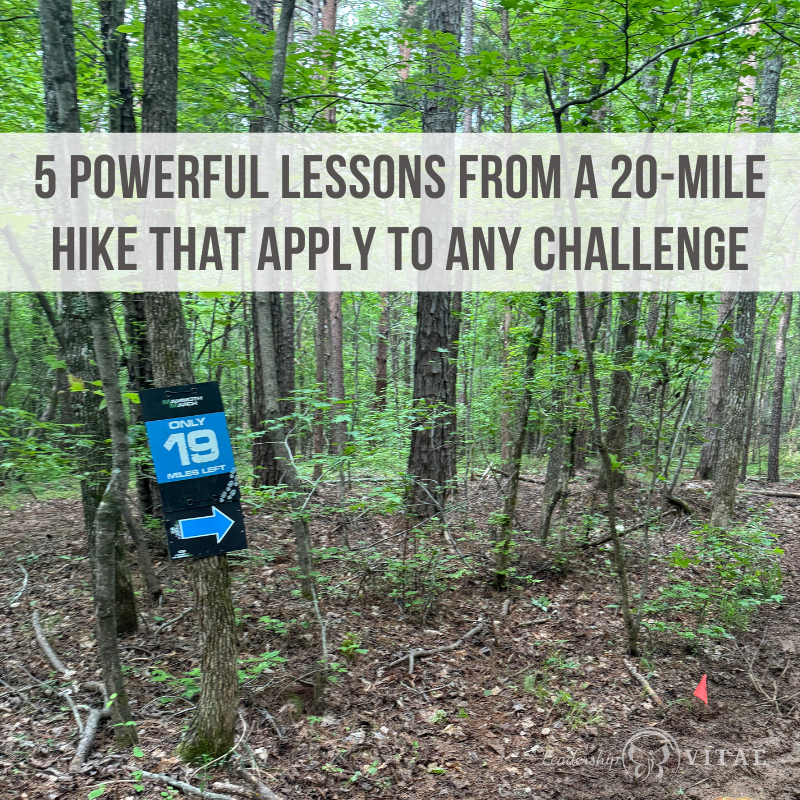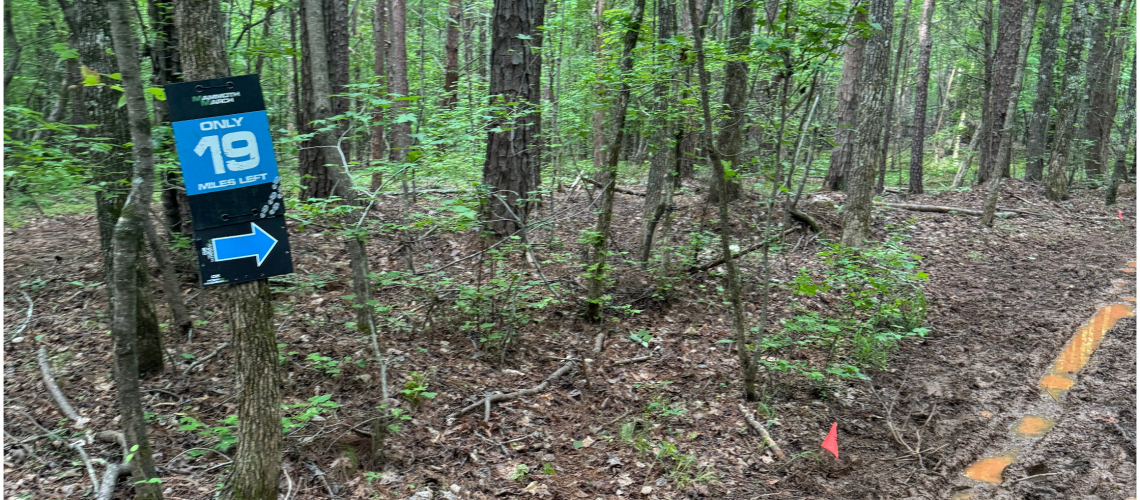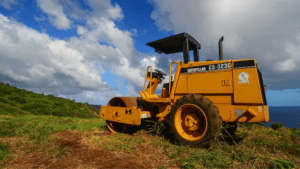
Last weekend, I completed the Mammoth March 20-mile hike (they lied…it was actually 21.5).
This adventure started when I accidentally completed an 11-mile hike back in December. That unexpected achievement sparked something in me – I decided I wanted to do distance hiking and stay fit for it all year, instead of only hiking during my occasional “momcations.”
That December momcation was cold and wet, but with new gear came new determination to get outside during the winter months where I’d normally hunker down and wait for spring. I’m not usually a winter outdoor person, but sometimes we surprise ourselves, right?
How It All Started: Setting the Challenge
Knowing that I respond well to a challenge (maybe too well?), I went looking for ways to stay motivated. I found the Hikers 365 and signed up for at least 365 miles of hiking throughout 2025. Then I spotted Mammoth March and impulsively signed up for two (so far) 20-mile hikes.
Yikes…that was a bit longer than what I was used to. However, knowing my experience with running, I figured if I could do 11, I could do 15. If I could do 15, I could do 20. It was totally achievable. (At least that’s what I told myself!)
I trained for months and ended up doing two 15-mile hikes in April. They were brutal, and I was in pain by the end of each one. I wasn’t 100% convinced I’d finish the full 20, but they had a shuttle that could take us back at mile 15 if I was struggling. I am a beast when challenged, but I’m not stupid. I didn’t want to permanently injure myself…I have enough health stuff going on.
At the end, I was exhausted, sore, and blistered. Yet I felt – feel – accomplished and proud of what I was able to do.

Finding Meaning in the Miles
Twenty miles is a long time to be out in nature. With no music or phone, seven hours can be a long time to be in your own head. Along the way, I pondered the lessons that had come from the months of training and finally the day of action. Pushing myself for the challenge and moving through all the phases of the day left me with some insights that apply far beyond the trail.
Here are 5 concepts that helped me move forward with the hike and can be translated into the work environment or any other time we face a challenge:
1. Plan Ahead for Friction and Discomfort
Ahead of the hike, I did my best to anticipate, minimize, or offset challenges. I knew my hiking boots would hurt by mile 15, but I also knew I needed them for the muddy conditions at the start of the hike (I did recon the day before…knowing what we’re walking into is great pre-planning, btw).
Before I left, I put blister bandages on friction points, wore silk liners under my wool socks, and laced my boots to take pressure off my toe box. These were all decisions to limit irritation that I knew could happen from prior hikes.
Even with those steps, I knew mile 15 was a make-or-break point. I brought replacement bandages, liners, socks, and trail runners to change into. By knowing where my friction points are, where discomfort would become pain, and planning ahead, I ended up going FASTER at the end than I had all day. I felt fresh, as if I had just started the hike vs. 15 miles in.
Work Translation: Knowing where we struggle, where there’s potential conflict, or where our resources may run low is something we can anticipate and plan for. Have backup strategies ready for when energy flags or when the project hits its toughest point.
2. Mind Over Matter. Always.
If you don’t mind, it doesn’t matter. This is one that I’ve carried with me for years and keeps me going when things are hard. When we are strong mentally, there’s nothing we can’t do.
I repeated this to myself around mile 13 when my feet started to complain. The discomfort was there, but I decided it wasn’t going to be the thing that stopped me. Our minds give up long before our bodies do.
This is not about ignoring real pain, but putting pain in context. Growing new muscle or new skills is uncomfortable. If we don’t mind, it doesn’t matter because we know the benefits we’ll gain on the other side.
Work Translation: The way we frame challenges dramatically impacts our ability to overcome them. Sometimes the biggest obstacle is our own perception of the difficulty. How can you reframe a current challenge?
3. If There’s Not Any Discomfort, You Can Push Harder
You can do more than you think you’re capable of. If things feel easy and comfortable, we’ve got more in the tank.
I was worried before I started that I might not finish. By the end of the hike, I knew I could go farther if needed. If we never push to the point of discomfort, and then even an inch further, we never know what we can do.
This is why I do challenges. That day in December where I accidentally hiked 11 miles showed me that the 4-6 mile hikes I had been doing were nowhere near what I was capable of. Now my base miles are closer to that distance on the regular. Going further than we think we can (even accidentally) sets a new bar of possibility.
Work Translation: Comfort zones rarely lead to growth. The projects and challenges that make us uncomfortable are usually the ones that help us discover new capabilities and strengths. What’s one thing that scares you that you can try? One inch of improvement on a current capability?
4. Be Aware of How You Best Show Up, But Stay Open
I prefer to hike alone in the silence and solitude of nature. There were a LOT of people out on the trail that day. Instead of tuning everyone out, I used the opportunity to selectively engage.
Surprisingly, it kept a smile on my face in moments where I might otherwise have struggled on my own. While knowing your preferences is important, sometimes the unexpected approach yields better results.
At the same time, when I found myself in between two different groups that were all having very loud conversations, I started getting anxious. My hearing challenges and sensitivity to noises were overwhelming. That was a sign for me to charge ahead so I could walk alone and reset.
We can honor our preferences AND find the benefit in alternatives.
Work Translation: Know your work style preferences, but don’t let them limit you. Sometimes the collaboration you’re avoiding might be exactly what helps you push through a difficult challenge.
5. Don’t Discount the Power of Groups and Common Goals
I struggled doing my 15-mile training hikes alone. I’d find myself in pain and dragging as I’d head back to my car. While I like to train alone, there is something to the energy of “race day.”
Being part of the Mammoth March experience pushed me harder than when I trained solo. I went further and faster than I planned. I also felt so much better at the end. Like I could fly through the finish line.
The expression “If you want to go fast, go alone. If you want to go far, go together.” is only partially right. I was able to go faster AND farther as an individual within a group sharing a common goal.
Work Translation: Common goals can be fuel to push harder, farther, and faster. The right team environment can elevate everyone’s performance beyond what they could achieve individually. Is there an opportunity to rally silo’d teams or individuals to a common outcome?
From Trail to Life: The Takeaway
Sometimes the physical challenges we take on teach us more than just our physical limits. They show us how to approach any obstacle – whether it’s a major work project, a personal goal, or a ridiculously long hike that was advertised as 20 miles but was actually 21.5 (not that I’m still thinking about that extra 1.5 miles or anything…).
What challenges are you taking on? And which of these lessons might help you push through when things get tough?
Side note: If anyone’s wondering if I’m signing up for more ridiculous physical challenges after this experience…ABSOLUTELY. What can I say? I’m a glutton for meaningful punishment.









One Response
Excellent article- I clearly see the many connections between personal physical challenges/goals and professional (work related) challenges. I appreciated your line about how we frame our challenges impacts how we overcome the – so true!